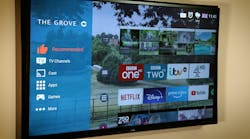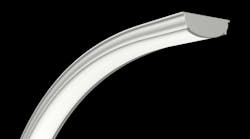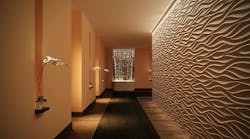North Carolina’s 2018 State Building Code went into effect January 1, 2019 complete with an updated Energy Conservation Code for Commercial Buildings. The new code includes the 2015 IECC© along with North Carolina specific amendments that need to be applied to any building submitted for permitting.
With the adoption of the 2018 North Carolina State Building Code for Energy Conservation (NCECC), North Carolina continues to increase the energy efficiency of its new commercial buildings, providing lower energy operating costs to building owners and managers.
Harold Jepsen, Vice President of Standards and Industry, Building Control Systems at Legrand, North & Central America, has outlined the biggest lighting control changes in the upcoming code updates.
Lighting Control Provisions Changes:
• All commercial buildings must comply with automatic shut off requirements, regardless of square footage. Buildings under 5,000 square feet are no longer exempt from this provision as in the prior code.
• Occupancy sensor control requirements used for automatic lighting shut off have been expanded to include rooms defined as being used for multipurpose, copy, print, mechanical, electrical, lounges, computer server, and warehouse spaces. The updated code also includes the eight defined uses already existing under the 2012 NCECC.
• Warehouse aisles and open areas must reduce lighting by at least 50 percent when not occupied. This will increase energy savings during normal warehouse operating hours when there is no activity in individual storage aisles and open areas by reducing, or completely turning off unneeded lighting.
• Hotel and motel guestrooms must automatically turn off lighting and switch receptacle, so lighting is not left on when guests leave the room.
Additional Code Changes
Outside of lighting controls, the 2018 NCECC has also adopted changes for lighting power allowances and efficiency package options, including:
• Revised lighting power allowance tables that reduce lighting power density in many common spaces from five to 12 percent.
• Added lighting measures for the Additional Efficiency Package Options.
• Revised lighting control system functional testing requirements.
Solutions & Resources
Compliance design examples for the new code are offered for free at Legrand. Visitors can find assistance in selecting appropriate controls and code compliant sequence of operations for many typical commercial building space types. Resources include:
• Quick Guide to North Carolina (2018)
• IECC© (2015) design recommendations and solutions
• IECC© (2015) commercial lighting and electrical control requirements
With the adoption of the 2018 North Carolina State Building Code for Energy Conservation (NCECC), North Carolina continues to increase the energy efficiency of its new commercial buildings, providing lower energy operating costs to building owners and managers.
Harold Jepsen, Vice President of Standards and Industry, Building Control Systems at Legrand, North & Central America, has outlined the biggest lighting control changes in the upcoming code updates.
Lighting Control Provisions Changes:
• All commercial buildings must comply with automatic shut off requirements, regardless of square footage. Buildings under 5,000 square feet are no longer exempt from this provision as in the prior code.
• Occupancy sensor control requirements used for automatic lighting shut off have been expanded to include rooms defined as being used for multipurpose, copy, print, mechanical, electrical, lounges, computer server, and warehouse spaces. The updated code also includes the eight defined uses already existing under the 2012 NCECC.
• Warehouse aisles and open areas must reduce lighting by at least 50 percent when not occupied. This will increase energy savings during normal warehouse operating hours when there is no activity in individual storage aisles and open areas by reducing, or completely turning off unneeded lighting.
• Hotel and motel guestrooms must automatically turn off lighting and switch receptacle, so lighting is not left on when guests leave the room.
Additional Code Changes
Outside of lighting controls, the 2018 NCECC has also adopted changes for lighting power allowances and efficiency package options, including:
• Revised lighting power allowance tables that reduce lighting power density in many common spaces from five to 12 percent.
• Added lighting measures for the Additional Efficiency Package Options.
• Revised lighting control system functional testing requirements.
Solutions & Resources
Compliance design examples for the new code are offered for free at Legrand. Visitors can find assistance in selecting appropriate controls and code compliant sequence of operations for many typical commercial building space types. Resources include:
• Quick Guide to North Carolina (2018)
• IECC© (2015) design recommendations and solutions
• IECC© (2015) commercial lighting and electrical control requirements
Contact:
Media Contact:Mary Placido, Legrand Building Control Systems
415-218-3627 [email protected]




